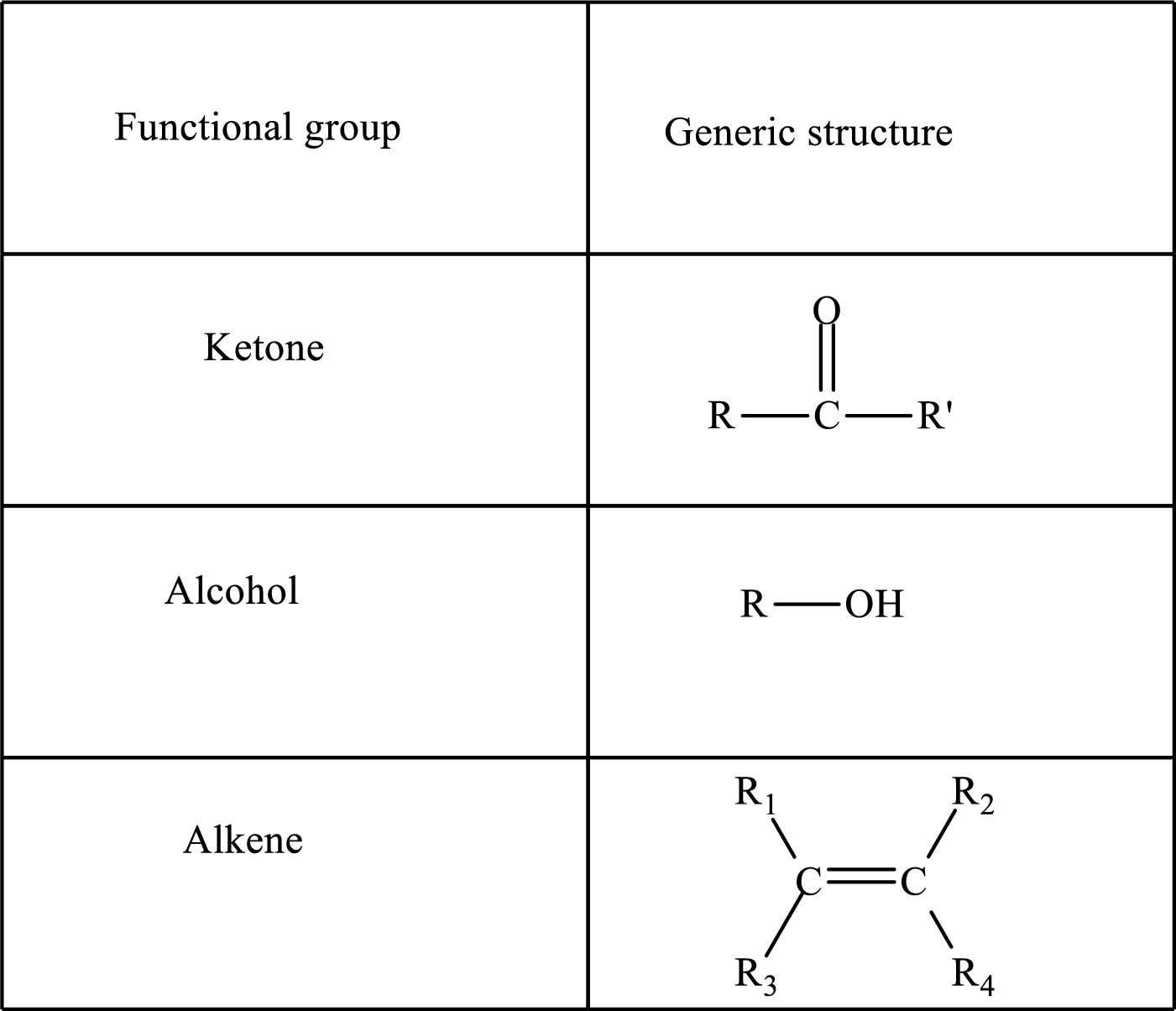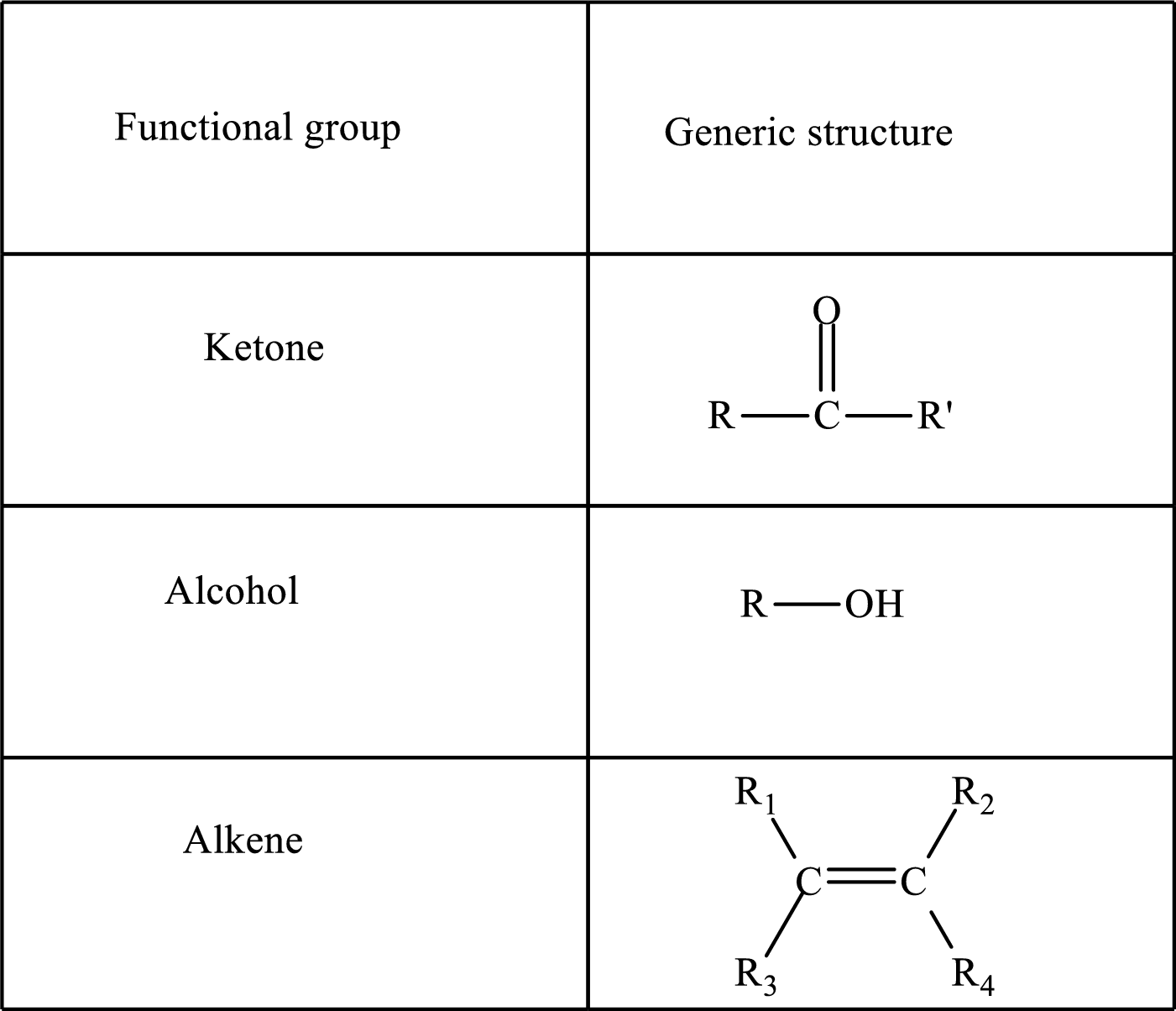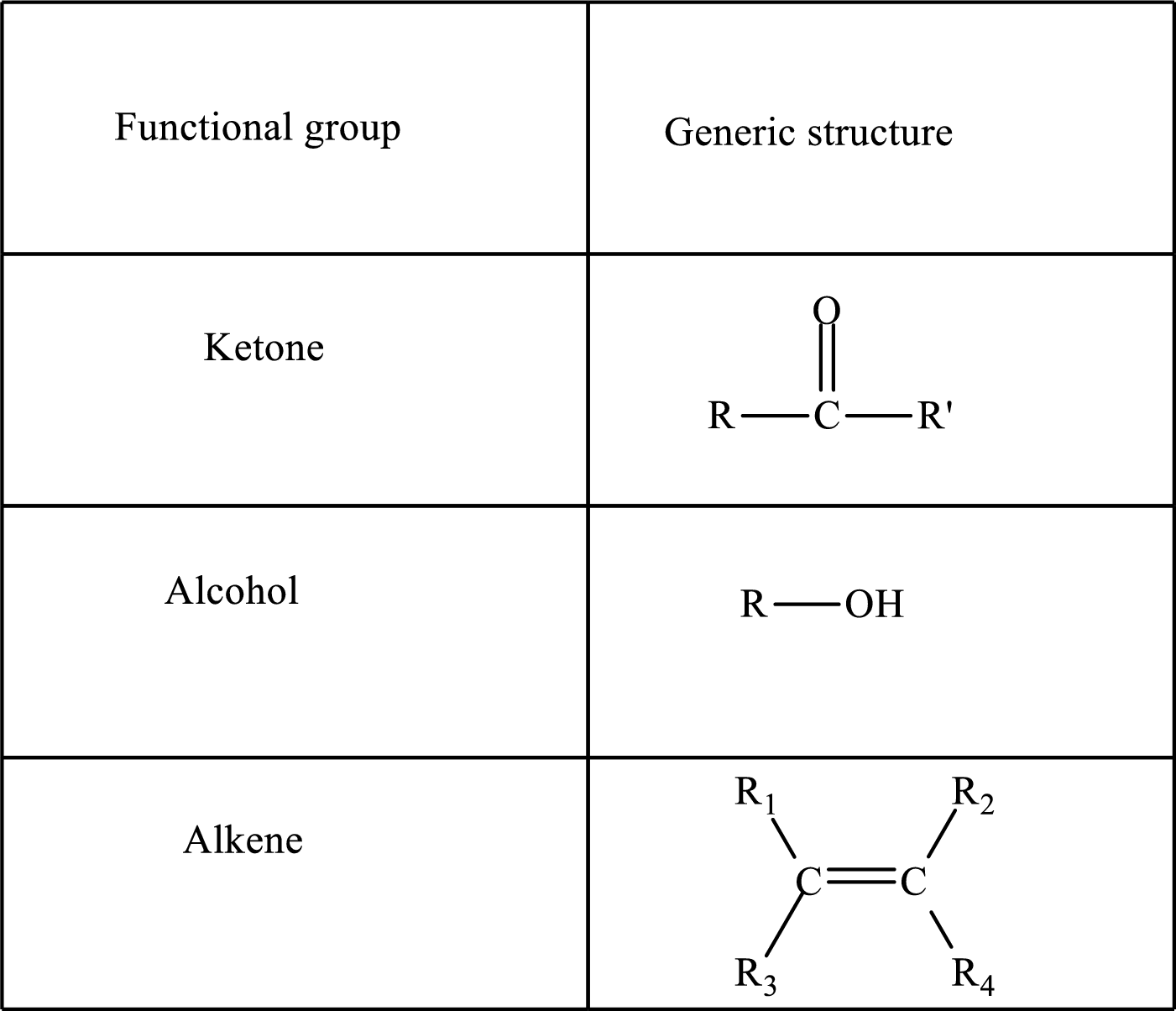
Concept explainers
(a)
Interpretation:
Whether crotonate, a C4 species is a (1) hydroxy acid, (2) keto acid, (3) saturated acid, or (4) unsaturated acid has to be identified.
Concept introduction:

Here, R and R’ represent an alkyl group. In alkene, R1, R2, R3, and R4 can be the same or different or can be hydrogen.
Keto acid has a
A carboxylate group is formed by the removal of the acidic hydrogen from the carboxylic group. The conjugate base is formed by the removal of acidic hydrogen from the corresponding acid.
(b)
Interpretation:
Whether oxaloacetate, a C4 species is a (1) hydroxy acid, (2) keto acid, (3) saturated acid, or (4) unsaturated acid has to be identified.
Concept introduction:
Functional groups are defined as the group of atoms which are attached to the carbon backbone of organic compounds. These are generally heteroatoms which are attached to the parent hydrocarbon chain. Some examples of functional groups are as follows:

Here, R and R’ represent an alkyl group. In alkene, R1, R2, R3, and R4 can be the same or different or can be hydrogen. Alkanes are saturated hydrocarbons that contain covalently bonded hydrogen and carbon atoms. Alkenes have a double bond, hence; they are unsaturated compounds.
Keto acid has a ketone and a carboxylic acid (-COOH) group. Hydroxy acid has a hydroxy (-OH) group and a carboxylic acid (-COOH) group. Saturated acids contain single bonds between carbon atoms and a carboxylic group. Unsaturated acid contains a double or triple bond between carbon atoms and a carboxylic group.
A carboxylate group is formed by the removal of the acidic hydrogen from the carboxylic group. The conjugate base is formed by the removal of acidic hydrogen from the corresponding acid.
(c)
Interpretation:
Whether acetoacetate, a C4 species is a (1) hydroxy acid, (2) keto acid, (3) saturated acid, or (4) unsaturated acid has to be identified.
Concept introduction:
Functional groups are defined as the group of atoms which are attached to the carbon backbone of organic compounds. These are generally heteroatoms which are attached to the parent hydrocarbon chain. Some examples of functional groups are as follows:

Here, R and R’ represent an alkyl group. In alkene, R1, R2, R3, and R4 can be the same or different or can be hydrogen. Alkanes are saturated hydrocarbons that contain covalently bonded hydrogen and carbon atoms. Alkenes have a double bond, hence; they are unsaturated compounds.
Keto acid has a ketone and a carboxylic acid (-COOH) group. Hydroxy acid has a hydroxy (-OH) group and a carboxylic acid (-COOH) group. Saturated acids contain single bonds between carbon atoms and a carboxylic group. Unsaturated acid contains a double or triple bond between carbon atoms and a carboxylic group.
A carboxylate group is formed by the removal of the acidic hydrogen from the carboxylic group. The conjugate base is formed by the removal of acidic hydrogen from the corresponding acid.
(d)
Interpretation:
Whether malate, a C4 species is a (1) hydroxy acid, (2) keto acid, (3) saturated acid, or (4) unsaturated acid has to be identified.
Concept introduction:
Functional groups are defined as the group of atoms which are attached to the carbon backbone of organic compounds. These are generally heteroatoms which are attached to the parent hydrocarbon chain. Some examples of functional groups are as follows:

Here, R and R’ represent an alkyl group. In alkene, R1, R2, R3, and R4 can be the same or different or can be hydrogen. Alkanes are saturated hydrocarbons that contain covalently bonded hydrogen and carbon atoms. Alkenes have a double bond, hence; they are unsaturated compounds.
Keto acid has a ketone and a carboxylic acid (-COOH) group. Hydroxy acid has a hydroxy (-OH) group and a carboxylic acid (-COOH) group. Saturated acids contain single bonds between carbon atoms and a carboxylic group. Unsaturated acid contains a double or triple bond between carbon atoms and a carboxylic group.
A carboxylate group is formed by the removal of the acidic hydrogen from the carboxylic group. The conjugate base is formed by the removal of acidic hydrogen from the corresponding acid.
Want to see the full answer?
Check out a sample textbook solution
Chapter 25 Solutions
EBK GENERAL, ORGANIC, AND BIOLOGICAL CH
- By chemical structure, urethanes include: A. Nialamid B. Parmidin C. Picamilon D. Isoniazid E. Atropine sulfatearrow_forwardGive some biological and medical applications of the following : a. formalin b. chloral c. urotropinearrow_forwardIndicate whether each of the following is a component of (1) a cerebroside but not a ganglioside, (2) a ganglioside but not a cerebroside, or (3) both a cerebroside and a ganglioside. a. Monosaccharide b. Oligosaccharide c. Fatty acid d. Sphingosinearrow_forward
- Edman's reagent is a. mercaptaethanol O b. dansyl chloride (1- dimethylamino-naphthalene- 5-sulfonyl chloride) O c. phenylisothiocyanate (PITC) O d. cynogen bromidearrow_forwardConstruct the following lipids: a. Alpha-arachido-beta-clupadonolignocerateb. Alpha-stearidono-beta-gadoleonevonatec. Alpha,beta-dimyristocapratearrow_forward2(a) Briefly explain how the protein test for dairy products was cheated by the adulteration of the products with melamine. 2(b) Briefly explain why occasionally it was found that some fresh seafood sellers treated the seafood products with formaldehyde solution.arrow_forward
- Name the compound: 1. Lys-Ile-Met-Val Draw the forms of the amino acid in the solution. 2. Glutamic Acid (4 forms) 3. Lysine (4 forms)arrow_forwardExplain the following given terms: (a) Phenylketonuria, (b) Thalassemia.arrow_forwardWhat are the possible effects of taking multivitamin tablets to your overall health? Explain in terms of biochemistry.arrow_forward
- A mixture containing glutamic acid, arginine, phenylalanine and valine was subjected to anion exchange chromatography at pH 7.0. Which of the amino acids interacted with the resin (anion exchanger) and last to be eluted with a buffer of decreasing pH? A. Glu B. Val C. Phe D. Argarrow_forwardConsider a buffer solution of acetate. The volume is 500 ml, the concentration is 200 mM, and the pH is 5.0. a. How many total moles of acetate plus acetic acid are present in the solution? Express answer as x.y with one digit before and one after the decimal place. b. What is the ratio of acetate ions (Ac-) to acetic acid ions (HAc) in the buffer solution (pH 5.0) if the pka is 4.76? Express the answer as x.yz with one digit before and two after the decimal place. c. How many moles of acetate are present in the solution? Express your answer to one decimal place. d. How many moles of acetic acid are present in the solution? Express your answer to one decimal place.arrow_forward41.) The bicarbonate system is composed of H2C03 and HCO3-. Which statement accurately describes these molecules? a.) H2CO3 and HCO3- are both strong bases. b.) B) H2CO3 is a strong base, and HCO3- is a weak acid. c.) C) H2CO3 is a weak acid, and HCO3- is a weak base. d.) D) H2CO3 and HCO3- are both weak acids. e.) E) H2CO3 is a weak base, and HCO3- is a weak acid.arrow_forward
